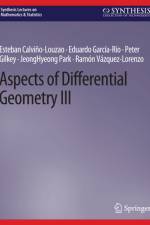av Esteban Calviño-Louzao
687
Book IV continues the discussion begun in the first three volumes. Although it is aimed at first-year graduate students, it is also intended to serve as a basic reference for people working in affine differential geometry. It also should be accessible to undergraduates interested in affine differential geometry. We are primarily concerned with the study of affine surfaces {which} are locally homogeneous. We discuss affine gradient Ricci solitons, affine Killing vector fields, and geodesic completeness. Opozda has classified the affine surface geometries which are locally homogeneous; we follow her classification. Up to isomorphism, there are two simply connected Lie groups of dimension 2. The translation group is Abelian and the ,,,,,,,, + ,,,, group\index{ax+b group} is non-Abelian. The first chapter presents foundational material. The second chapter deals with Type ,,,, surfaces. These are the left-invariant affine geometries on . Associating to each Type ,,,, surface the space of solutions to the quasi-Einstein equation corresponding to the eigenvalue ,,,,=-1$ turns out to be a very powerful technique and plays a central role in our study as it links an analytic invariant with the underlying geometry of the surface. The third chapter deals with Type ,,,, surfaces; these are the left-invariant affine geometries on the ,,,,,,,, + ,,,, group. These geometries form a very rich family which is only partially understood. The only remaining homogeneous geometry is that of the sphere ,,,,2. The fourth chapter presents relations between the geometry of an affine surface and the geometry of the cotangent bundle equipped with the neutral signature metric of the modified Riemannian extension.



